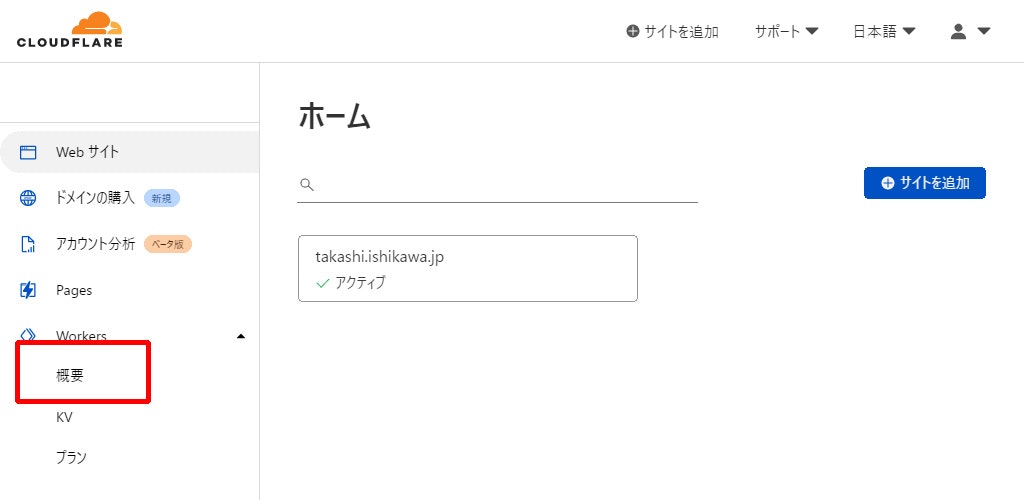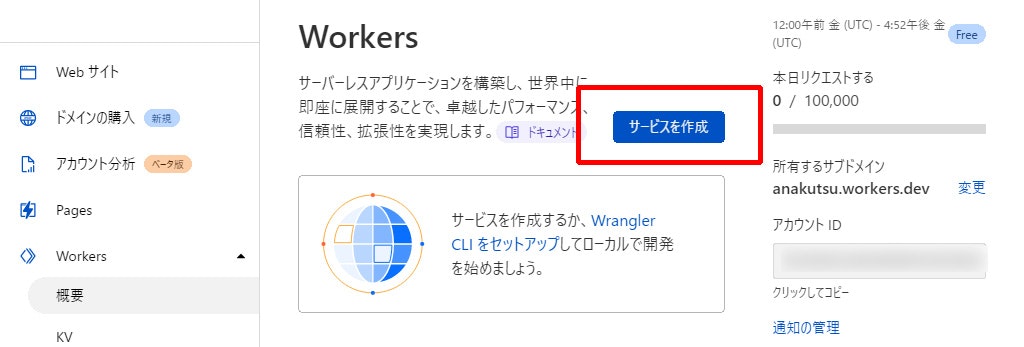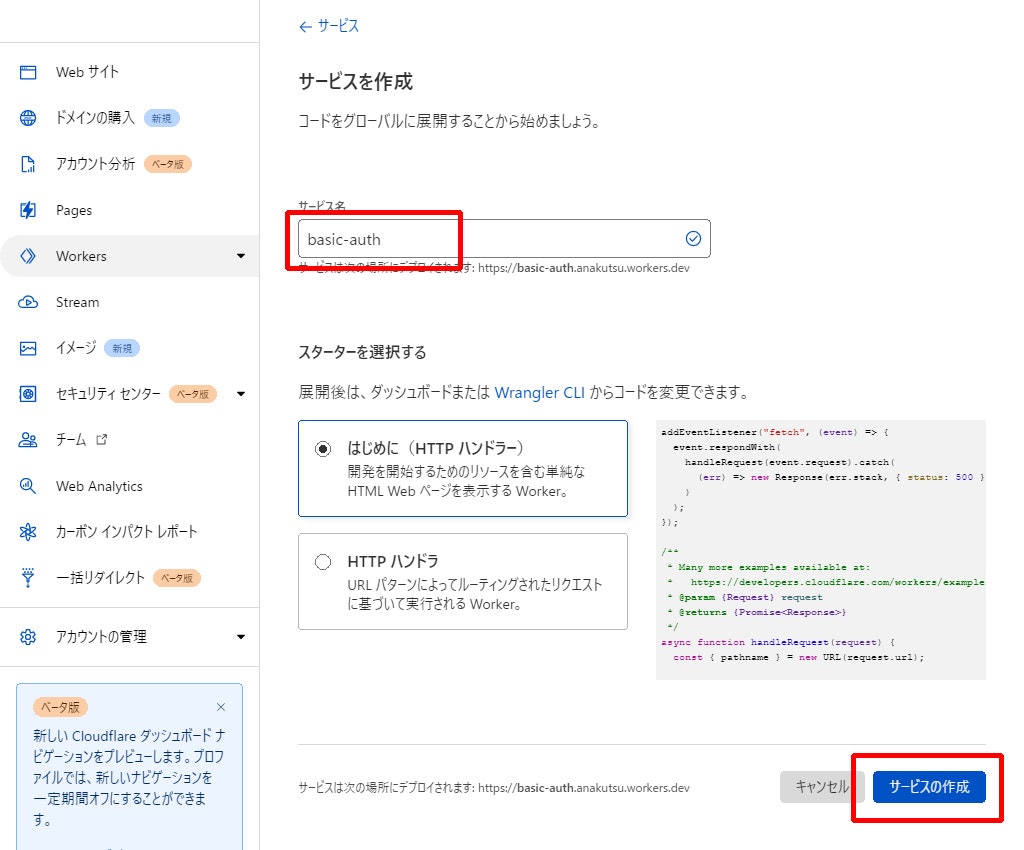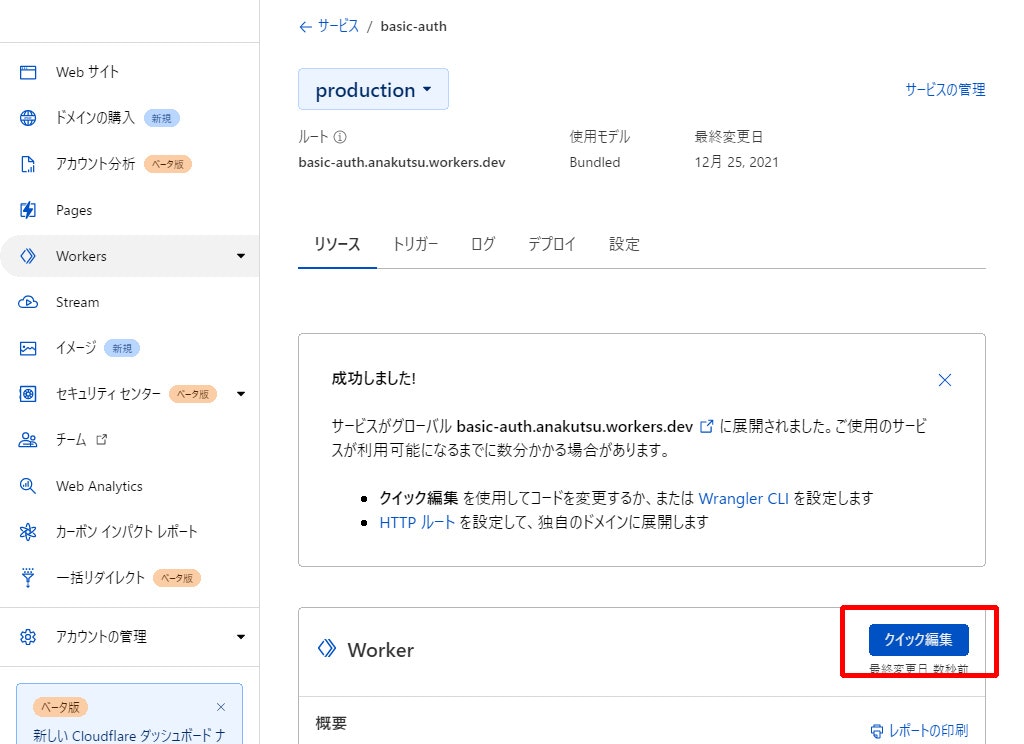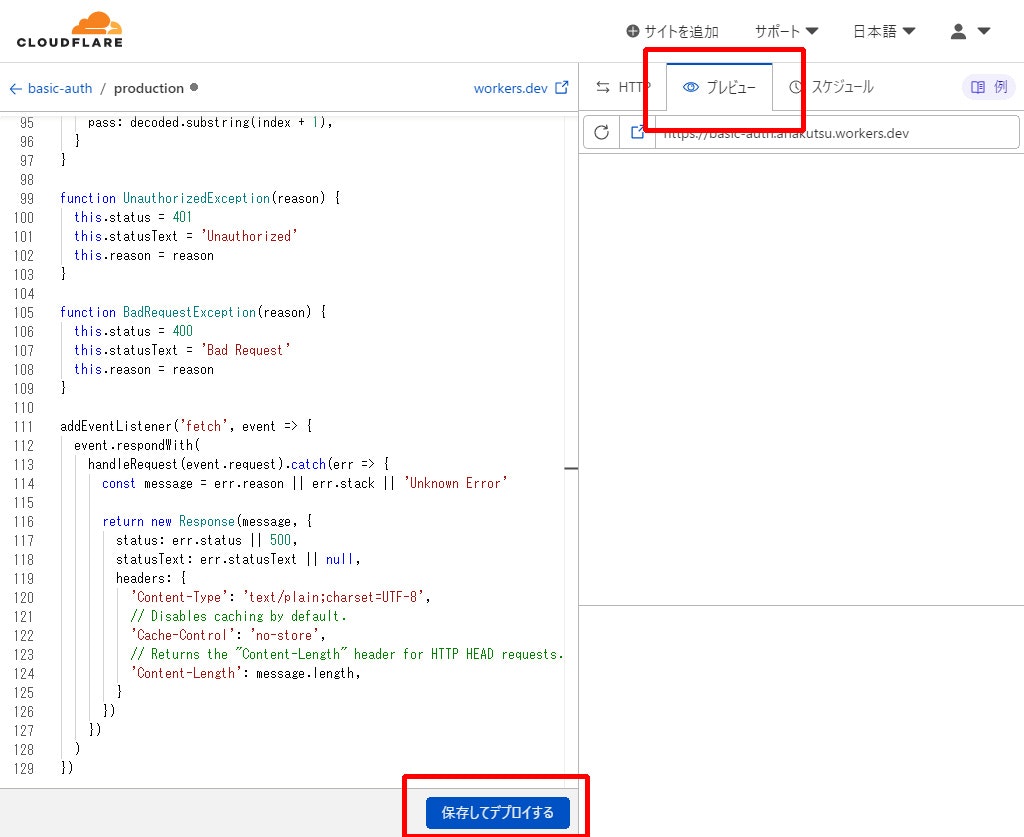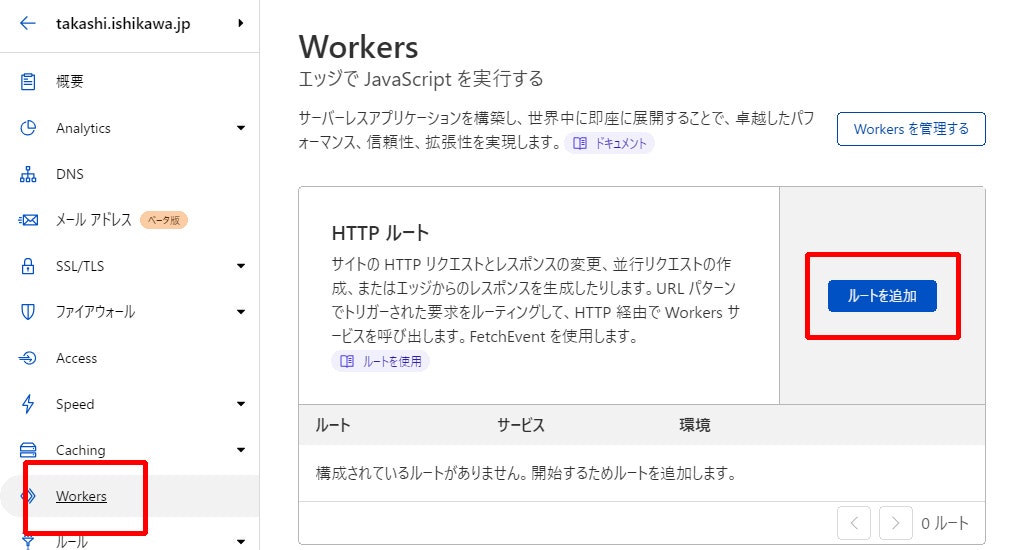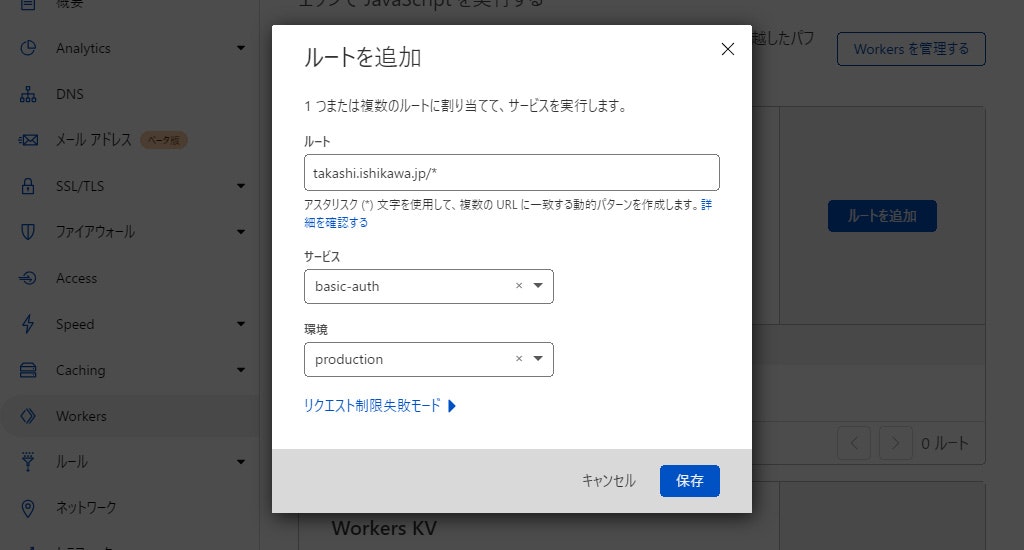オープン前のGoogle除けなど、一時的に関係者限定のサイトにするためにBasic認証を設定したいんだよな、というシーンがあるかと思います。
コンテンツ側で htaccess とかで設定してもいいのですが、配信がCloudflare経由になっているなら、Cloudflare Workers でも実現できますよ、ということでメモしておこうと思います。
まずはWorkersを作成します。
初めての場合は、ベースとなるサブドメインの設定やプランの選択を行うウィザードが表示されると思いますので、画面の手順に従ってセットアップを行います。
「サービスを作成」ボタンを選択します。
適当にサービス名を設定して「サービスの作成」ボタンを選択します。
「クイック編集」ボタンを選択してコードエディタを開きます。
プログラムはCloudflare Workersのサンプルにもズバリのコードがあるので、これを参考にしましょう。
サンプルはオリジンレスで動かす前提になっているので、これをサイトエッジで動かす前提として、認証後は通常通りオリジンにリクエストが流れるよう調整します。
/**
* Shows how to restrict access using the HTTP "Basic" schema.
* @see https://developer.mozilla.org/en-US/docs/Web/HTTP/Authentication
* @see https://tools.ietf.org/html/rfc7617
*
* A user-id containing a colon (":") character is invalid, as the
* first colon in a user-pass string separates user and password.
*/
const BASIC_USER = 'admin'
const BASIC_PASS = 'admin'
/**
* Receives a HTTP request and replies with a response.
* @param {Request} request
* @returns {Promise<Response>}
*/
async function handleRequest(request) {
const { protocol, pathname } = new URL(request.url)
// In the case of a "Basic" authentication, the exchange
// MUST happen over an HTTPS (TLS) connection to be secure.
if ('https:' !== protocol || 'https' !== request.headers.get('x-forwarded-proto')) {
throw new BadRequestException('Please use a HTTPS connection.')
}
// The "Authorization" header is sent when authenticated.
if (request.headers.has('Authorization')) {
// Throws exception when authorization fails.
const { user, pass } = basicAuthentication(request)
verifyCredentials(user, pass)
// Only returns this response when no exception is thrown.
return fetch(request)
}
// Not authenticated.
return new Response('You need to login.', {
status: 401,
headers: {
// Prompts the user for credentials.
'WWW-Authenticate': 'Basic realm="Please input id and password.", charset="UTF-8"'
}
})
}
/**
* Throws exception on verification failure.
* @param {string} user
* @param {string} pass
* @throws {UnauthorizedException}
*/
function verifyCredentials(user, pass) {
if (BASIC_USER !== user) {
throw new UnauthorizedException('Invalid username.')
}
if (BASIC_PASS !== pass) {
throw new UnauthorizedException('Invalid password.')
}
}
/**
* Parse HTTP Basic Authorization value.
* @param {Request} request
* @throws {BadRequestException}
* @returns {{ user: string, pass: string }}
*/
function basicAuthentication(request) {
const Authorization = request.headers.get('Authorization')
const [scheme, encoded] = Authorization.split(' ')
// The Authorization header must start with "Basic", followed by a space.
if (!encoded || scheme !== 'Basic') {
throw new BadRequestException('Malformed authorization header.')
}
// Decodes the base64 value and performs unicode normalization.
// @see https://datatracker.ietf.org/doc/html/rfc7613#section-3.3.2 (and #section-4.2.2)
// @see https://dev.mozilla.org/docs/Web/JavaScript/Reference/Global_Objects/String/normalize
const decoded = atob(encoded).normalize()
// The username & password are split by the first colon.
//=> example: "username:password"
const index = decoded.indexOf(':')
// The user & password are split by the first colon and MUST NOT contain control characters.
// @see https://tools.ietf.org/html/rfc5234#appendix-B.1 (=> "CTL = %x00-1F / %x7F")
if (index === -1 || /[\0-\x1F\x7F]/.test(decoded)) {
throw new BadRequestException('Invalid authorization value.')
}
return {
user: decoded.substring(0, index),
pass: decoded.substring(index + 1),
}
}
function UnauthorizedException(reason) {
this.status = 401
this.statusText = 'Unauthorized'
this.reason = reason
}
function BadRequestException(reason) {
this.status = 400
this.statusText = 'Bad Request'
this.reason = reason
}
addEventListener('fetch', event => {
event.respondWith(
handleRequest(event.request).catch(err => {
const message = err.reason || err.stack || 'Unknown Error'
return new Response(message, {
status: err.status || 500,
statusText: err.statusText || null,
headers: {
'Content-Type': 'text/plain;charset=UTF-8',
// Disables caching by default.
'Cache-Control': 'no-store',
// Returns the "Content-Length" header for HTTP HEAD requests.
'Content-Length': message.length,
}
})
})
)
})
プレビューでBasic認証のダイアログが表示されることまで確認したら「保存してデプロイ」を選択します。
保存したら次はサイトの設定です。アカウントホームに戻って、Basic認証を設定したいサイトを選択します。
メニューから「Workers」を選択して、「ルートを追加」を選択します。
ルートには「[ドメイン]/*」を入力、サービスは先程作成したWorkersのサービスを選択、環境は「production」を選択して、「保存」ボタンを選択します。
これですべて設定は完了です。
実際にアクセスしてBasic認証が設定されていることを確認しましょう。
設定箇所に慣れてしまえば、 htaccess でいちいちサーバーにファイル設置して・・・、など作業するよりも早くてかんたんなのではないでしょうか!?
